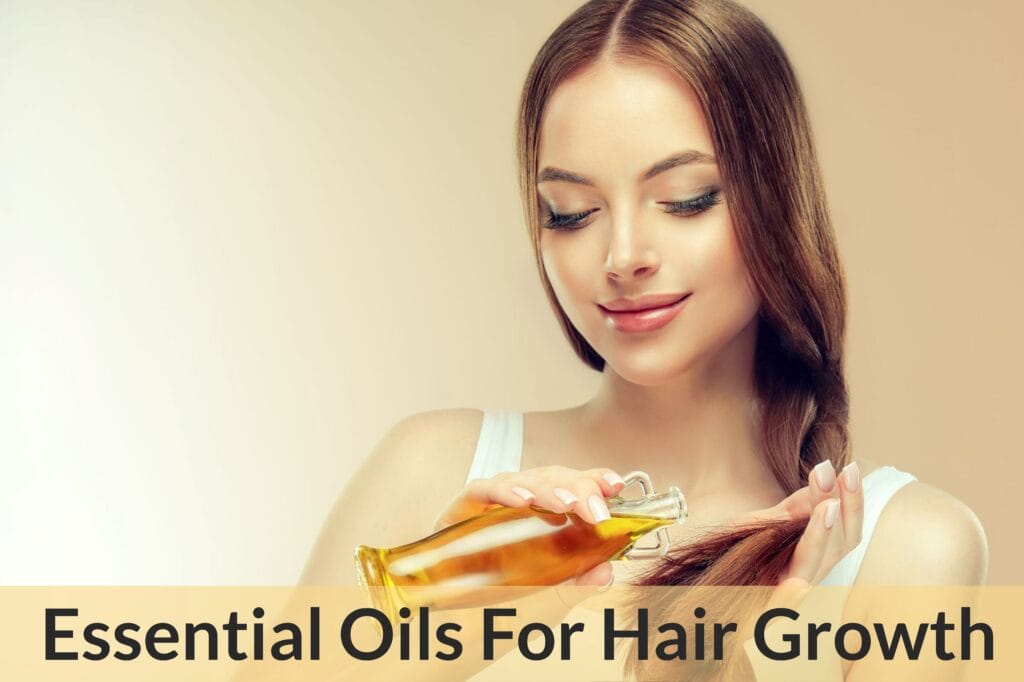
Yes, we are going to talk about using essential oils for hair growth today. But, I refuse to start this article by playing up the feminine allure of long tresses.
However, once that is removed out of the equation, you are bound to wonder, why bother with hair growth at all?
I mean, shouldn’t you be more concerned about hair loss?
Table of Contents
You will need those locks to grow as they should!
Hair growth is not just important if you want flowing, long tresses. If you subject your hair to any kind of chemical or mechanical treatment, read coloring, straightening, the heat of a hair dryer or a curling iron, those locks will be stressed.
This means they will be prone to breakage, regardless of how much serum and conditioner you use. You also have to consider the environmental damage that your hair is subjected to.
The moral of the story is that hair damage will accumulate over time and there is no way to avoid it completely.
Fortunately, as your hair grows, you can simply remove the damaged length with a haircut. But, without growth that would not be possible.
No, it’s not really about the hairdo you sport!
Whether you a favor a buzz cut or luscious long locks or any other hairdo, hair growth is vital to them all. It goes without saying that you won’t be able to experiment with your crowning glory unless your hair are growing as they should.
In fact, without good hair growth, you won’t be able to hold on to your present hairdo for too long. Imagine, you are sporting a cute pixie but then 2 months down the line, a few strands have grown long while others are struggling to keep up with their rate of development.
A trip to the hairdresser may help some but even after a lot of snipping and trimming, you may not be able to get back to the perfection of your original haircut.
Can’t blame the hairdresser there; it’s hard to work with uneven hair growth because along with the length, the texture of the hair will also vary.
Without growth, you will be stuck with damaged hair that have been subjected to the elements. Moreover, the difference will be striking if you indulge in hair coloring.
If keeping your current hairdo can get so hard, think about all the trouble you’d go through to change your hair style or hair length. Suppose you want to go from buzz to bob, you’ll end up waiting for a few years to get there unless your hair grows the way it should.
Hence, even if long locks are not your thing, hair growth should still be a concern. This brings us to our first question of the day…
What Exactly Is Normal In Terms Of Hair Growth?
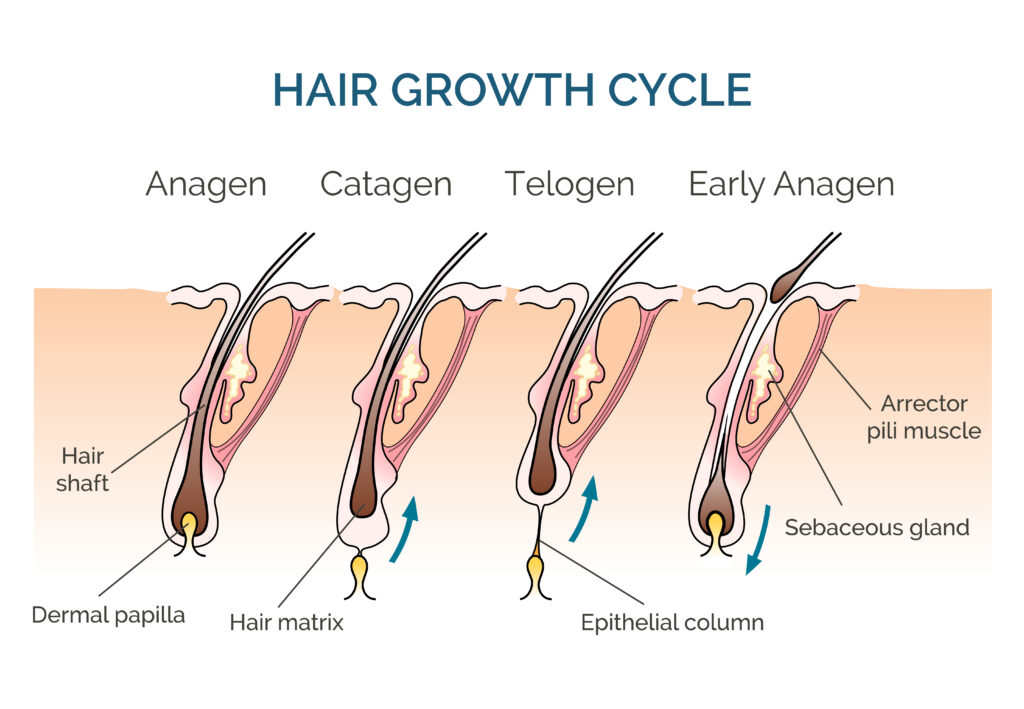
On an average, scalp hair grows about ½ inch every month, which works out to about 6 inches of length per year. Depending on a range of factors, including genetics, your hair growth may be more or less than this average.
It is not unusual for some people to clock a measly 1 cm of hair growth/month or for others to enjoy an inch of hair growth over a 30-day period. In case you are wondering, what then is abnormal?
Well, if you go from ½ inch to ½ cm per month, there sure is some problem brewing. Because the addition of ½ inch isn’t much, you may not notice the slow down at first. But, it will get conspicuous over a period of 2-4 months, particularly if you have a short or mid length hairdo that calls for a trim every 6-8 weeks.
The one thing you need to understand is that hair loss is not the same as slow hair growth, although a combination of these factors leads to baldness.
That said, men have it better on this front as well as their hair tend to grow faster than those of women. You’d be surprised to know that there is also a seasonal element to hair growth.
Like all other parts of your body, chilly weather does not sit well with your hair either, so they tend to grow faster in summer and slower in winter. More or less in both these cases is only a matter of a few millimeters, so you may not even notice it until much later.
But, you may not have a problem with hair growth!
As you can see, it is easy to spot a hair growth problem. Yet, people tend to confuse other trichological issues with slow hair growth. For instance, take a look at these three problems which are often presumed to be a hair growth issue.
When you lose hair: Whether your hair loss is normal or not, when the hair strand is shed, the growth restarts from the follicle. Considering the normal rate of hair growth, it will be 5-6 months before the strand reaches the length of 2- 2.5 inches.
Now, if your normal hair length is say 10 inches, the short strands of 2- 2.5 inches may appear to be growing slow in comparison, and on the whole, it may seem like your hair growth has taken a hit.
When you hair loses length because of breakage: When hair is constantly subjected to heat and chemical treatments, the strands go increasingly weak and break midway, leaving you with several locks that are shorter than your average hair length.
Even if these damaged and broken strands grow normally, it will be a while before they will be able to match the length of the other hair on your scalp. This again may be confused with a hair growth issue.
When you just can’t seem to get your hair to grow beyond a certain length: Try as they may, some people just can’t seem to grow their hair beyond a certain length. Hair growth and hair loss in humans is not a cyclical or seasonal process like in animals. Actually, it’s phasic and random.
We are born with an average of 100,000 hair follicles on the scalp, and that is all we get for one lifetime. Each of these follicles produces a filament-like outgrowth, which we know as hair.
The hair on your scalp, like on the rest of your body, goes through 3 phases.
- The anagen phase is the active growth stage in which the hair cells multiply rapidly. The newly-formed hair, pushes the club hair up and out of the skin and eventually breaks through the dermal barrier. For the hair on your scalp, the anagen phase can last between 2- 6 years.
- The next stage is the catagen phase in which growth stops and the hair root shrinks to form what is called a club hair. About 1-3% of all your hair are in the catagen phase at any given time, and this stage only lasts for 15-20 days.
- Finally, your hair reaches the telogen or the resting phase in which the club hair is completely formed and the shaft is detached from the follicle. This phase lasts for approximately 100 days after which the growth cycle restarts and the new hair gradually pushes the club hair out of the skin as it grows upwards.
The reason why the hair on the rest of your body don’t grow as long as those on your scalp is because they have a very short anagen or growth phase. So, those of you who can’t grow their hair beyond a certain length have a short anagen phase of about 2-3 years, which gets you no more than 18 inches of length.
Although your genes are mostly to thank for your naturally short anagen phase, there are other factors that can influence the duration of the growth phase.
The good news is that there are also natural ways to increase the length of the anagen stage as well as to boost the cellular regeneration during this stage, which would get you an increase in length. We, will talk about that in a bit, but first let me answer your next question.
What Are The Factors That Slow Down Hair Growth?
Age gets to us all and to the all of us:
Well, in terms of growth your skin can’t even get close to the performance of your hair, but those tresses are just as susceptible to the ravages of age as your skin.
Apart from age-linked hormonal fluctuations, the two other factors that can mess with your hair growth are circulatory problems and a dry scalp.
Poor circulation brings along the deficiency of nutrients and oxygen, which starves the roots and makes them shrink, sending hair into early catagenic phase.
As far as dry skin on the scalp goes, the accumulation of dead cells can block the hair follicles and impede the ability of new and growing hair to break out of the epidermis.
Your hair is the last to get to the buffet:
Let me put it this way; your skin is never the first to get its hands on the gravy boat, which means neither are those hair follicles. So, any deficiency is obviously experienced more acutely by the hair follicles.
The lack of protein and vital nutrients like vitamin B12, iron and zinc can cause the hair follicles to become weak and can push the hair out of the growing phase and into the shedding stage.
Poor scalp condition exacerbates the problem:
Be it dandruff, a fungal infection or an autoimmune condition like psoriasis, anything that causes scalp inflammation is bound to be impact hair growth.
Oh those crazy hormones:
I am sorry to say this but this one is for all us gals out there who are struggling with hair growth issues. Pregnancy, post pregnancy and menopause are the three phases that seriously and significantly impact all parts of a woman’s body and all aspects of her life. The good news is that you get luscious, thick locks to go with that pregnancy glow.
Thank your soaring estrogen levels for it because the hormone helps to keep more of those hair strands in the growth phase. Needless to say, once your bundle of joy arrives, the estrogen level takes a dip and so does the duration of the anagen phase. It does not actually get reduced but it does go back to your pre-pregnancy days. This coupled with the stress of handling a new born can lead to significant hair loss.
Hypothyroid:
An underactive thyroid (hypothyroidism) causes your metabolism, blood pressure and heart rate to plunge. Needless to say, nutritional deficiencies do crop up, which may lead to the shrinkage of hair roots and early onset of the telogen phase. Moreover, experts also believe that thyroid hormones play a role in regulating the ratio between the anagen and the telogen phase.
Thyroid hormone receptors are expressed in the hair follicles, and these directly influence the functioning of the stem cells in the hair follicles, which are responsible for hair cycling or hair growth. Typically, supplementation with synthetic hormones restores the balance between the anagen and the telogen phases.
Nutritional deficiencies:
The lack of iron, even if it has not progressed to the level of anemia, often causes hair growth issues in women in the same way that hypothyroid does.
Low ferritin levels can lead to similar hair growth issues. Ferritin is a protein that stores and releases iron, so if ferritin levels are low, you can be quite sure that you must also be suffering from low levels of iron.
Eating disorders:
Bulimia and anorexia lead to severe nutritional deficiencies. Your body not only suffers from the paucity of vitamins and minerals but is also starved of major nutritional groups such as proteins. Without protein, your hair growth will slow down and can even stop.
How Are Hair Growth Problems Treated?
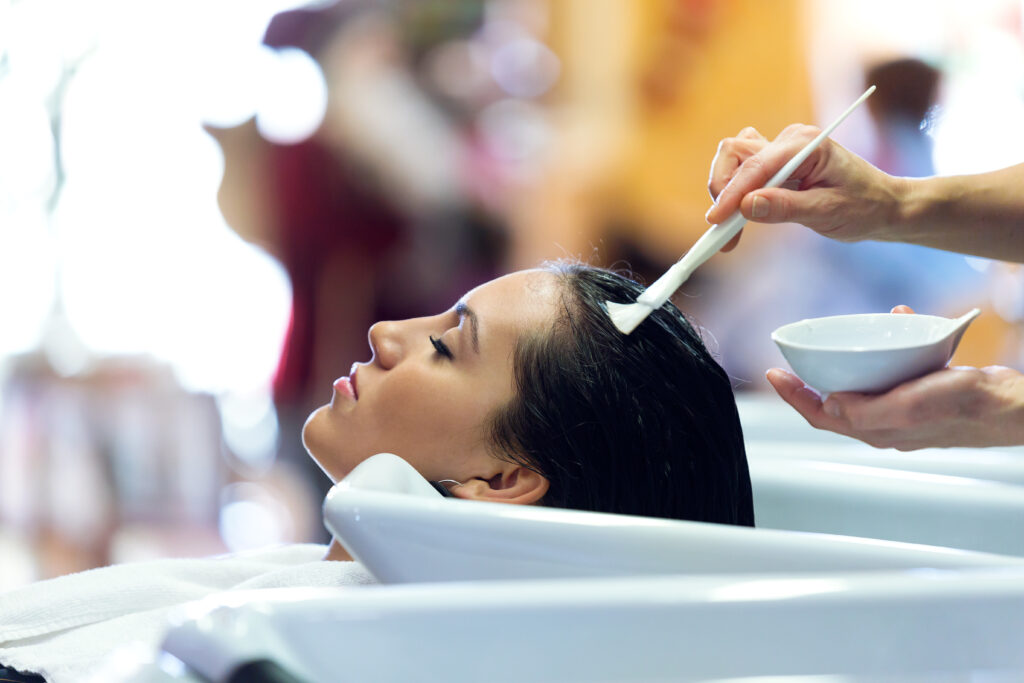
Although there are a lot of options for treating hair loss, your choices are limited when you are dealing with a hair growth problem.
Simply put, help is only available when you are out to go bald. But, what if you are not really battling a shiny patch on your head?
In that case, you basically stuck with thickening shampoos and conditioners, Rogaine or futuristic laser helmets and gadgets. Here is how these options fare:
1. Thickening shampoos and conditioners:
I don’t think anybody can dispute the fact that the boys and girls who model for popular hair thickening shampoos have gorgeous hair. Their shine, thickness, length and bounce are enough to invoke envy. But, equally true is the fact that they don’t owe those drool-worthy tresses to the products they are helping sell.
I know these formulations are sold with truly tall claims. Unfortunately, most of them are baloney. At worst, you won’t get any results from these products, and at best, the improvement in the hair texture and thickness will only be temporary.
Regardless of what they tell you, there is no way that these formulations will help to boost hair growth.
2. Minoxidil:
The true heavy weight in this list, minoxidil has earned itself the approval of the lofty FDA as the only OTC medication that helps to curb hair loss and improve hair growth/regrowth. You probably know this drug as Rogaine or Keranique. It is typically offered in the form of a shampoo, foam or hair serum.
The strike rate of minoxidil is about 60%, and of those users, almost 40% reported only minimal regrowth in hair. So, as you can see, this is far from being a sure-fire solution to your hair growth woes, but this does not mean that it’s free of side effects.
Mild adverse reactions include scalp irritation, headache, dizziness, swelling in the hands and legs and unwanted hair growth on the other parts of the body. More severe side effects include fast heart rate, chest pain, light headedness, fainting and confusion. In fact, the drug is contraindicated for people with cardiac issues.
3. Laser therapy:
Call this one the new kid on the block and the latest money churner that is beckoning everybody on board. Theoretically, these gadgets are meant to stimulate the hair follicles through the use of low intensity laser. The products available in this class run the gamut; from brushes and combs to helmets and even hair bands.
You’ll have to plunk at least a $1,000 for one of them, and you will be incurring that cost solely on the basis of a research conducted in 1960 on rodents. My guess would be that infra-red therapy is known to help with inflammation, so these products may help in cases of hair loss or problems with hair growth that result from scalp inflammation.
But, a study conducted in 2013, noted no significant improvement in hair length or diameter in response to the use of these devices.
In fact, some people have reported an increase in hair loss after they put their expensive hair helmets and combs to use. Hence, my advice would be to tread with caution. Because the last thing you need is to burn the skin on your scalp and end up with scar tissue; then you can really bid farewell to your locks forever.
Should You See A Doctor For Your Hair Growth Problems?
Yes, you do need to see a doctor if you don’t see your hair growing normally or are clogging the bathroom drain with your shedding. It’s not so much the hair growth issue as the underlying health concern that may be causing it, which needs to be investigated and diagnosed.
For women, trichological issues are often an indication of hormonal imbalance. If you let hormonal anomalies prevail, you will be doing damage to more than just your hair follicles.
As far as the boys are concerned, the Hollywood stereotype of the balding, middle aged man with a beer belly suffering from a stroke or a heart attack are not an exaggeration.
Hypertension, high cholesterol levels and cardio vascular issues will lead to hair growth problems and hair loss. So, your baldness may be a sign of impending trouble with the ticker. Hence, you should see a doctor first and then a trichologist for your hair growth issues.
Can Essential Oils Really Help To Improve Hair Growth?
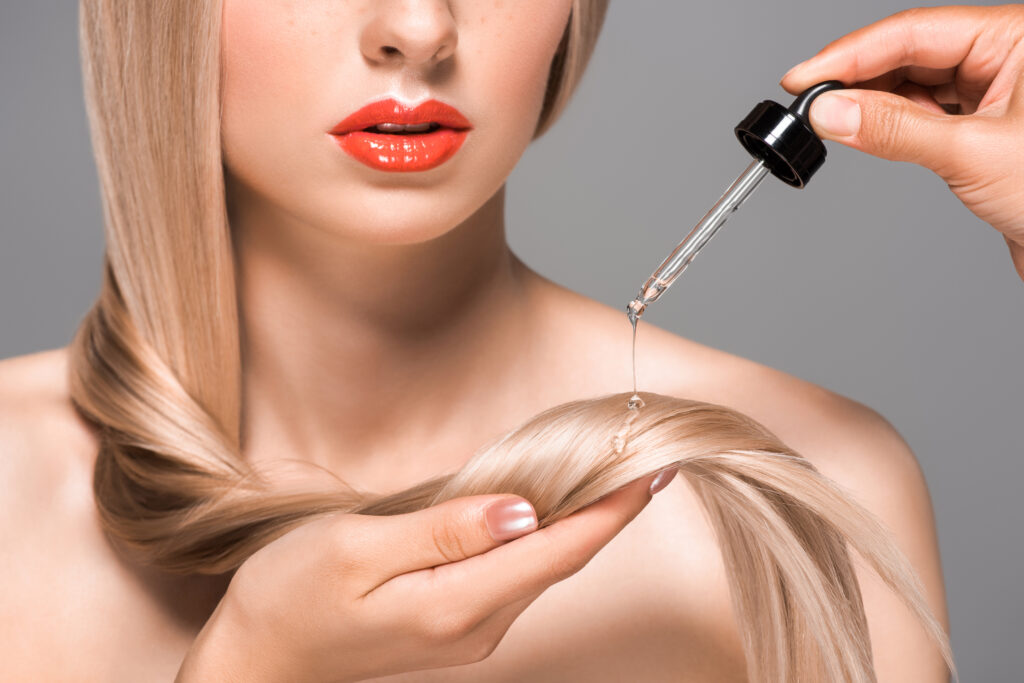
Yes, they can! I know it seems like I can’t say one bad thing about essential oils.
But ya’ll know me. I’m never the one to play up the benefits of any product/ingredient/compound. In this case, these oils can truly move those hair follicles if not mountains.
Essential oils help in innumerable ways to boost hair growth because they can deal with nearly all the factors that disrupt the anagen cycle and slow down hair growth. Let me tell you how…
Tackling the inflammation: If something is wrong with any part of your body, you can be reasonably sure that inflammation has some part to play in it. Now, you already know that nothing tames inflammation like essential oils. So, these super smelling extracts sure do have you covered on this front.
The lack of nutrition and oxygen: Your hair and your skin are the first to show signs of nutritional deficiencies. Fortunately, essential oils can save the day for your tresses by improving blood supply to the scalp and restoring the flow of nutrients to the skin cells as well the hair follicles.
Dealing with the dryness: As the lack of moisture makes its way from the epidermis to the dermis, the hair follicles start to shrink along with the dermal cells that surround them. This in turn chokes the hair roots, pushing each strand towards the telogen phase.
But, with essential oils you can stop the damaging cycle before it starts. In fact, essential oil blends can be used to keep the skin on the scalp supple and healthy as well as to protect it and the hair strands and follicles from environmental damage and critter attacks.
Making those hair follicles work as hard as they should: Although there are very few compounds out there that can manage this seemingly impossible task, some oils and herbs actually have the capacity to slow down the shrinking of the sheath that surrounds the hair root, which occurs in the catagen phase and eventually leads to the telogen phase.
If the hair root stays plump for longer, this simply means that you get that much more growth time for each strand. Couple this with a healthy flow of nutrients and we are talking about an increase in both hair length and width.
And, that is how you get lustrous, thick and gorgeous locks! So, let’s get talking about the ingredients that make a difference…
The Best 4 Essential Oils For Hair Growth!
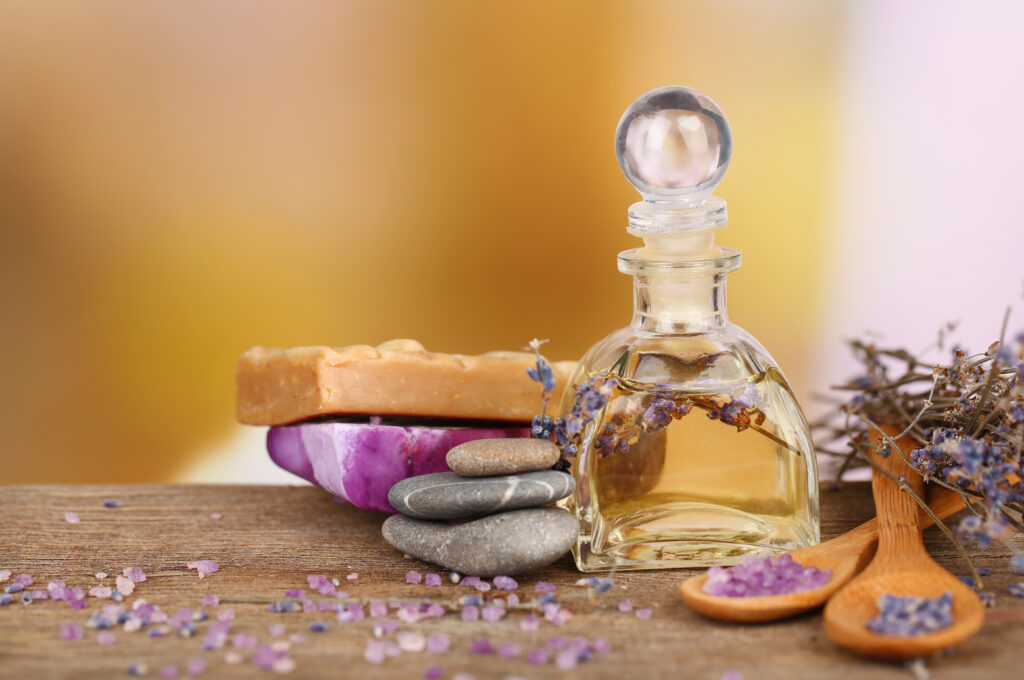
1. Lavender
Wait, don’t shake that head in disbelief and dis my choice of lavender essential oil. I promise it is not here just for its soothing and calming aroma, which, by the way, does free you from the manacles of stress. But, I am using it here for a totally different reason.
The application of lavender oil prevents the hair follicles from shrinking and keeps them lodged into the deeper dermal layers for a longer period of time, thus detaining the hair shafts in the growth stage.
Moreover, lavender oil also helps to reduce the number of mast cells around the hair follicles. The chemical mediators in these cells contribute towards pushing the hair strands into the catagen phase.
Plus, you already know about the anti-inflammatory and antioxidant benefits of this aromatic extract, which protect the scalp and the hair follicles from damage. Furthermore, the oil helps to keep the scalp free of microbes and aids in preventing dryness.
2. Sandalwood
This is another essential oil, which is known to greatly impact the number of mast cells surrounding the hair follicle. A lower number of mast cells equates to a delayed onset of the catagen phase.
Additionally, the earthy, woody aroma of the oil acts as an effective stress buster and neutralizes the detrimental effects of cortisol on the hair follicles. If that’s not enough, the sesquiterpenes in the extract protect the skin of the scalp, the hair strands and hair follicles from environmental stressors as well as from loss of moisture.
3. Peppermint
On the surface, this oil helps to stimulate blood flow to the scalp, increasing the supply of nutrients and oxygen to the hair follicles. Moreover, peppermint essential oil is a potent anti-inflammatory, antioxidant and antimicrobial agent with cleansing properties that helps to remove hair follicle blockages.
However, the most profound effect of this oil is in increasing the depth of the hair follicle and the conservation of the vascular link of the dermal papillae. Together these mechanisms, lead to rapid onset of anagen phase after the telogen phase and in an increase in the duration of the anagen phase.
4. Pine needle
This extract may seem a bit out of place in this list at first. But, if you look closely at its healing properties, you will realize that pine needle essential oil can help to retain and enhance scalp moisture levels while preventing the buildup of sebum. It also improves blood circulation to the scalp.
Along with these aromatic extracts, the recipes listed ahead also include bergamot, rosemary, geranium and eucalyptus essential oils, which are rich in monoterpenoids that act as FGF-5 inhibitors. FGF-5 (Fibroblast growth factor-5) is a peptide responsible for the progression of hair from the anagen to the catagen phase.
It’s not just essential oils but also the carrier oils that you choose which will make a difference to the efficacy of your hair growth blend. The best carrier oils to use for the job include:
- Black seed oil, which has just the right blend of fatty acids.
- Argan oil, which contains significant amounts of vitamin E
- Castor oil, which contains ricinoleic acid. This fatty acid increases the amount of prostaglandin E2 in the scalp tissue, which is linked to hair growth.
Apart from these, there are 2 macerated oils (Ayurvedic preparations) that can help immensely to improve hair growth and reduce hair loss. They are hard to find, but their ability to boost hair growth and limit hair loss is utterly impressive. These are:
- Bhringaraj oil
- Yashtimadhu oil
Both of these combine several herbs with the goodness of sesame seed oil, and they can be used as the carrier oil for your hair growth blend.
In addition to these, we will also use angelic root powder, licorice root powder/extract, green tea (matcha) and caffeine powder. So, let’s start pampering those locks.
Top 6 Essential Oil Recipes For Hair Growth
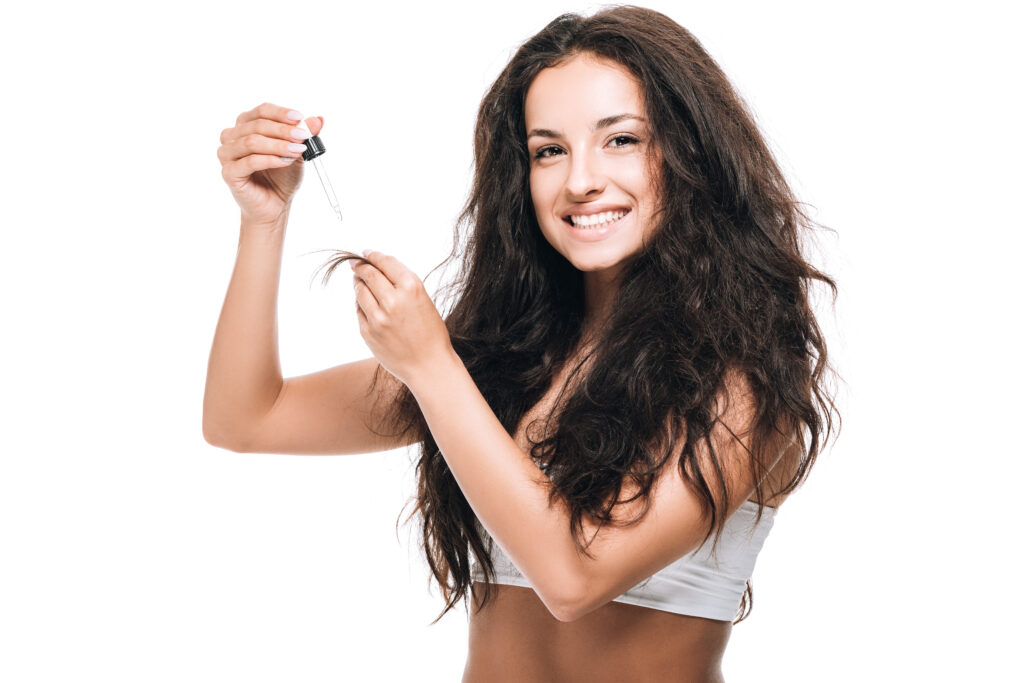
1. The overnight hair oil treatment
- 30 ml carrier oil blend (3:1 mix of black seed oil and castor oil) or one of the macerated carrier oils mentioned above
- 10 drops peppermint oil
- 5 drops eucalyptus oil
- 3 drops bergamot oil
Method
Mix the oils and store in a dark glass bottle away from direct heat and light. Apply to your scalp and hair, massaging the scalp for about 15-20 minutes. No need to warm the oil before use but do keep it on overnight.
2. Blend for pre-shower scalp massage
- 50 ml black seed oil
- 8 drops pine needle oil
- 5 drops each thyme and eucalyptus essential oils
- 8 drops each of grapefruit and peppermint essential oils
Method
This blend is for when you cannot find the time at night for the 20 minute head massage or just don’t relish the idea of sleeping with oil on your hair. Preparation and usage as above, but wrap your head with a towel after applying the oil and keep it on for 30-60 minutes.
3. Hair growth shampoo
- 2 tsp matcha powder
- 10 drops rosemary oil
- 15 drops each of geranium and peppermint essential oils
- 1 cup Castile soap or soap nuts for the foaming base
- 2 tsp coconut oil
Method
If using soap nuts, tie 7-8 in a muslin cloth and put the pouch in a pan. Add 2 cups of water to it and place the pan on heat. Bring to a boil and then reduce heat to simmer for 20-25 minutes. Add a cup of water to the contents of the pan and simmer again for 10 minutes. Remove the muslin bag and squeeze till you see suds. You can use a cup of this extract as your foam base. However, you will need to store the shampoo in the refrigerator.
Mix the essential oils with the coconut oil and set aside. Pour the foaming base into a medium sized bowl and add the matcha powder to it. Whisk well and make sure that the mixture is clump-free. Using a spoon is your best bet here.
Add the essential oil and coconut oil blend to the mixture and whisk till there are no visible sign of the lipids on the surface of the foaming base. Store in a glass bottle and use as you would any other shampoo. This shampoo stays good for 15 days, discard whatever remains after two weeks.
4. Leave in conditioner for super-fast hair growth
- 30 ml Argan oil
- 12 drops lavender oil
- 8 drops sandalwood oil
Method
Mix the oils together and store in a dark glass bottle. To use, take about 2-3 drops of the blend in the palm of your hand. Warm the blend by rubbing your palms together and then run your fingers and palms through your hair, reaching down to the scalp.
The idea is to apply most of the blend to the scalp and cover the hair shafts with what remains. Don’t use more than a few drops or you’ll end up with oily and sticky hair. Used in the right amount, this blend will make your hair more manageable and will definitely give them a glossy look.
5. Super hydrating and nourishing hair mask
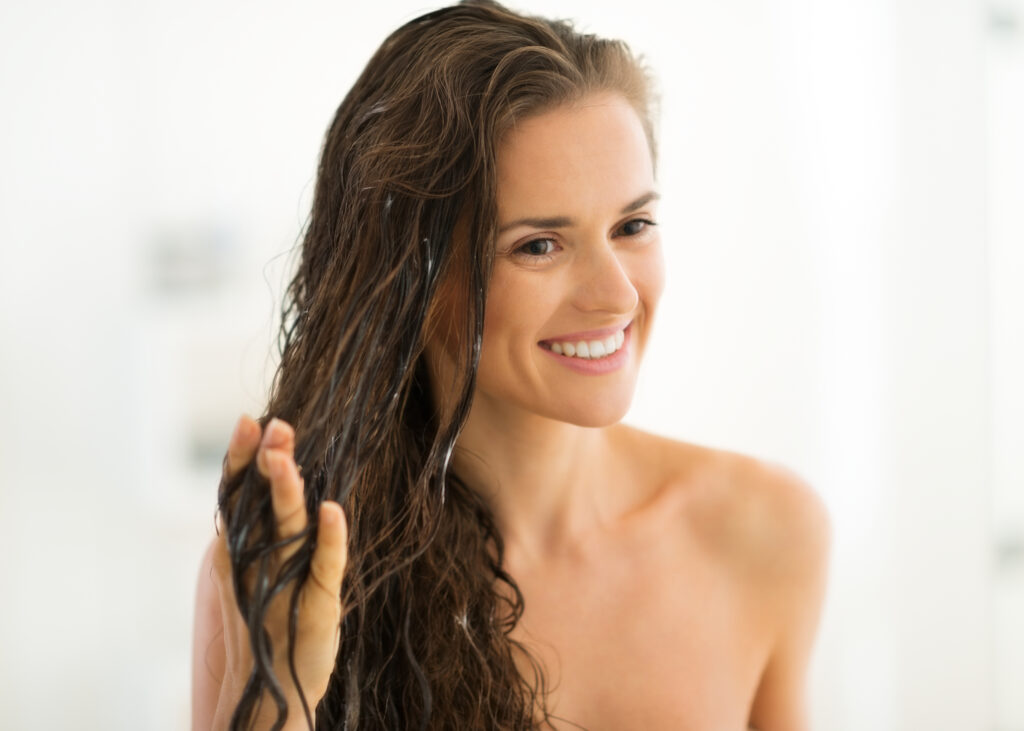
- 1 heaped tsp angelica root powder
- 1 heaped tsp licorice root powder
- ½ cup Coconut milk
- ½ avocado (medium sized) mashed to a pulp.
- ½ tsp caffeine powder
- 5 drops lavender oil
Method
Mash ½ avocado to a pulp and add the angelica root powder and licorice root powder to the puree. Slowly mix in the coconut milk till you get a paste with smooth syrupy consistency. Finally, mix in the caffeine powder and whisk well. Make sure that your mask isn’t too thick or too thin. You will have trouble applying it and keeping it on if you don’t get the consistency right.
Once the mask is ready, apply with a brush on your scalp and on your hair. Cover with a disposable shower cap and let the mask work its magic on your scalp and your locks for 30 minutes. Remember to wipe off any runaway drops before they get close to your peppers. Wash off using warm water. You don’t need to shampoo your hair after this treatment.
6. Hair spray for hair growth
- ½ cup Lavender hydrosol
- 1 cup aloe gel (not the green stuff sold in plastic jars)
- 2 heaped tbsp fenugreek seeds (you will find this ingredient online or in specialty food stores)
Method
Grind the seeds to a powder using the coffee mill or a mortar and a pestle. Soak the ground fenugreek seeds in a cup of water overnight. In the morning, boil the water with the seeds in it. Turn down the heat and simmer for 15 minutes and take it off the stove. Allow the extract to cool down to room temperature. Filter to remove the residue of the ground seeds.
You will need ½ cup of this extract. Mix it with the lavender hydrosol and the aloe vera gel. Store in a bottle with a fine mister head and use as you would an ordinary hair spray. You may have already guessed that this isn’t a maximum hold hair spray that will keep a voluminous and complex 80’s hairdo intact even in the face of gusty winds.
What you get is a flexible hold spray that will do your hair a world of good and will protect them while keeping your coiffured locks in relatively good shape. Store in the refrigerator and prepare a fresh batch every 5 days.
On A Parting Note….
Well folks, there you have it – all the information that you need to keep your hair growing and thriving. But, let me clarify that no amount of topical hair care will help unless you give those locks the nutrition they need and keep a check on unhealthy lifestyle habits.
Smoking and excess alcohol consumption poison all parts of your body and your hair are bound to bear the brunt of the detrimental effects of these toxins. Additionally, any factor that increases your stress levels and consequently the amount of cortisol in your body will create trouble for your tresses.
So, living healthy is one of the easiest and most effective ways to ensure that your hair live long. That’s all for today folks. May you have long, shiny and thick tresses for decades to come!
